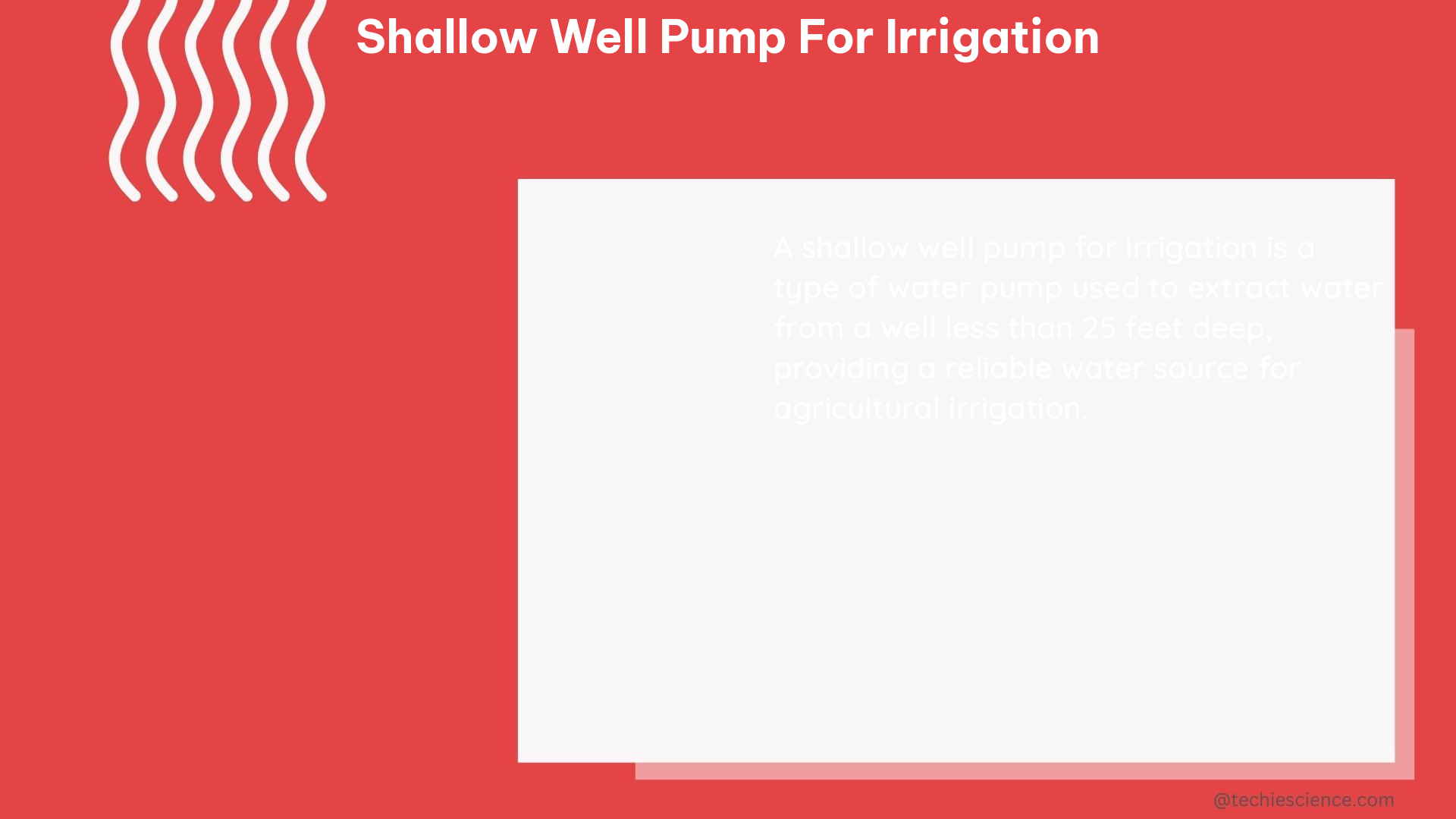Shallow well pumps are essential components of irrigation systems, responsible for drawing water from a shallow well and supplying it to the irrigation network. The pump’s capacity, measured in gallons per minute (GPM) or liters per second (lps), and the discharge pressure, measured in pounds per square inch (psi) or kiloPascals (kPa), are critical factors to consider when selecting the right pump for your irrigation needs.
Measuring Pump Capacity for Irrigation System Design
When designing an irrigation system, accurately measuring the pump capacity is crucial. The University of Florida’s Institute of Food and Agricultural Sciences (IFAS) recommends a specific approach to measure the pump capacity:
- Measure the flow rates at 5 psi (34 kPa) increments until the regulating valve is fully open, resulting in a total of 10 data points.
- This strategy provides a more accurate representation of the relationship between pressure and discharge rate, which is typically curved rather than linear.
For example, if a sprinkler irrigation system requires 35 psi (214 kPa) at the pump, a shallow well pump with a maximum flow rate of 13.0 gpm (0.82 lps) would be necessary. If the system requires more than 13.0 gpm, it would need to be designed and operated in zones to ensure no single zone requires more than the pump’s maximum flow rate.
Factors Affecting Pump Head-Discharge Curves

Various factors can influence the pump head-discharge curves, including:
- Pump and Power Unit Design and Size: The design and size of the pump and power unit can affect the pump’s performance.
- Worn Components: Impellers or other components that have become worn can impact the pump’s capacity.
- Pump Speed: The speed at which the pump is operated can affect the pump’s head-discharge characteristics.
- Well Size: The size of the well can influence the pump’s performance.
- Aquifer Characteristics: The characteristics of the aquifer, such as permeability and water table depth, can impact the pump’s capacity.
- Suction and Discharge Pipe Size: The size of the suction and discharge pipes can affect the pump’s head-discharge curves.
- Intake Screens and Check Valves: The size, design, and maintenance of intake screens and check valves can also impact the pump’s capacity.
Accounting for Friction Loss in the Mainline
When designing an irrigation system, it’s essential to account for friction loss in the mainline, which reduces pressure as water moves through pipes and fittings. The optimal pipe size is crucial for an efficient operating system, as a smaller pipe size increases pressure loss due to the need to push water through faster to maintain outflow.
To calculate the friction loss, you can use the Hazen-Williams equation or the Darcy-Weisbach equation, which take into account factors such as pipe diameter, flow rate, and pipe material. By selecting the appropriate pipe size, you can minimize friction loss and ensure the irrigation system operates efficiently.
Selecting the Optimal Shallow Well Pump
When selecting a shallow well pump for your irrigation system, consider the following factors:
- Pump Capacity: Ensure the pump’s maximum flow rate (GPM or lps) meets the irrigation system’s requirements.
- Discharge Pressure: The pump should be able to provide the necessary discharge pressure (psi or kPa) for the irrigation system.
- Power Source: Choose a pump that is compatible with your power source, whether it’s electric, gasoline, or diesel.
- Well Depth: Ensure the pump’s suction lift capabilities match the depth of your shallow well.
- Pump Type: Select the appropriate pump type, such as a centrifugal, jet, or submersible pump, based on your specific irrigation needs.
- Energy Efficiency: Consider the pump’s energy efficiency to minimize operating costs and environmental impact.
- Durability and Maintenance: Choose a pump with a reputation for reliability and ease of maintenance to ensure long-term performance.
By carefully considering these factors and following the best practices for measuring pump capacity and accounting for friction loss, you can design an efficient and effective irrigation system using a shallow well pump.
References:
- Measuring Pump Capacity for Irrigation System Design – EDIS, IFAS, UFL
- Irrigation System on a Well Pump – Lawn Care Forum
- What Size Pump Do I Need for My Irrigation System? – Drip Depot

The lambdageeks.com Core SME Team is a group of experienced subject matter experts from diverse scientific and technical fields including Physics, Chemistry, Technology,Electronics & Electrical Engineering, Automotive, Mechanical Engineering. Our team collaborates to create high-quality, well-researched articles on a wide range of science and technology topics for the lambdageeks.com website.
All Our Senior SME are having more than 7 Years of experience in the respective fields . They are either Working Industry Professionals or assocaited With different Universities. Refer Our Authors Page to get to know About our Core SMEs.